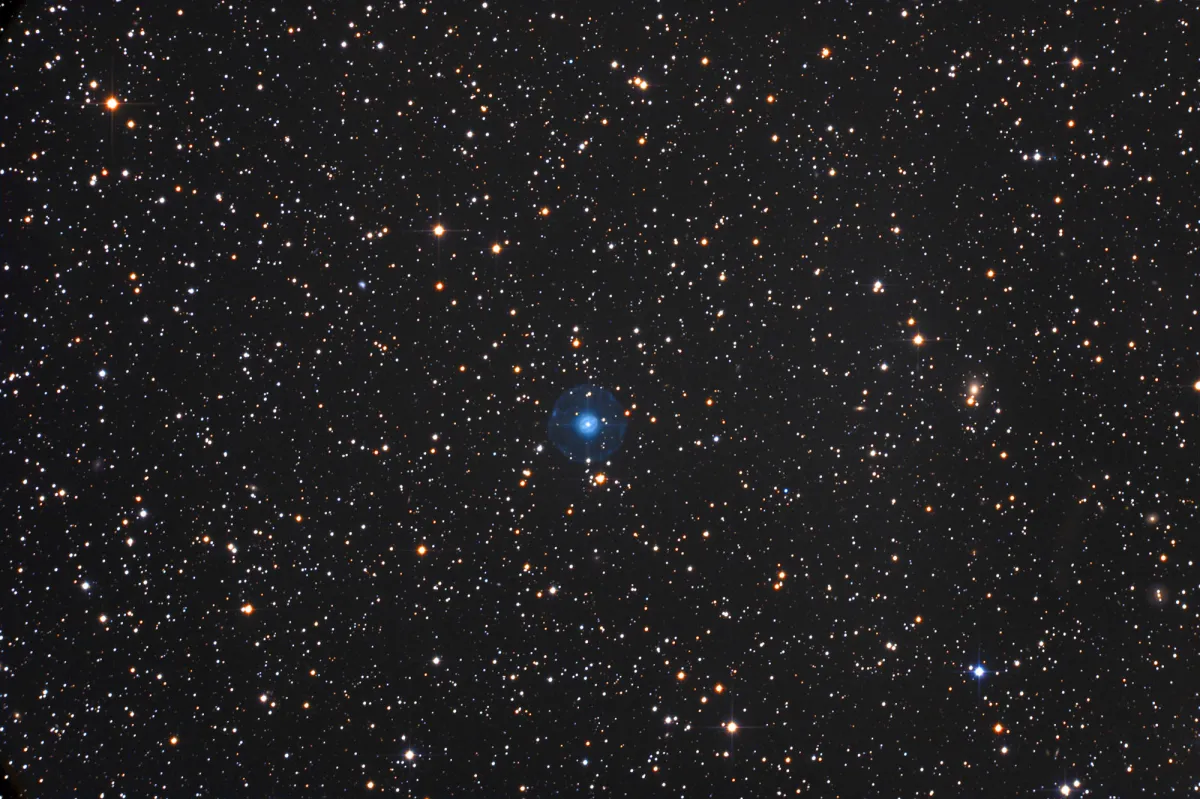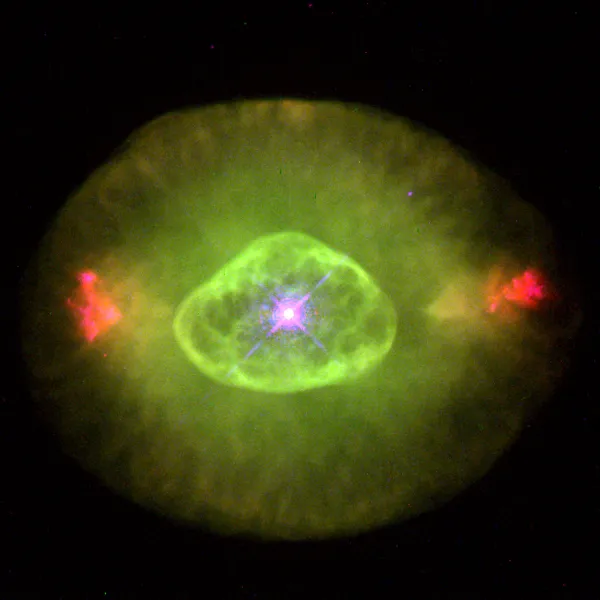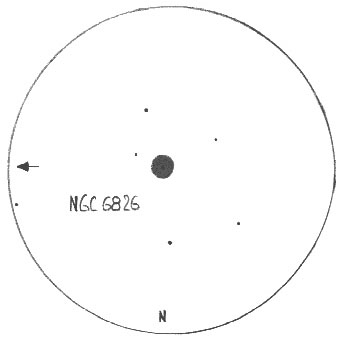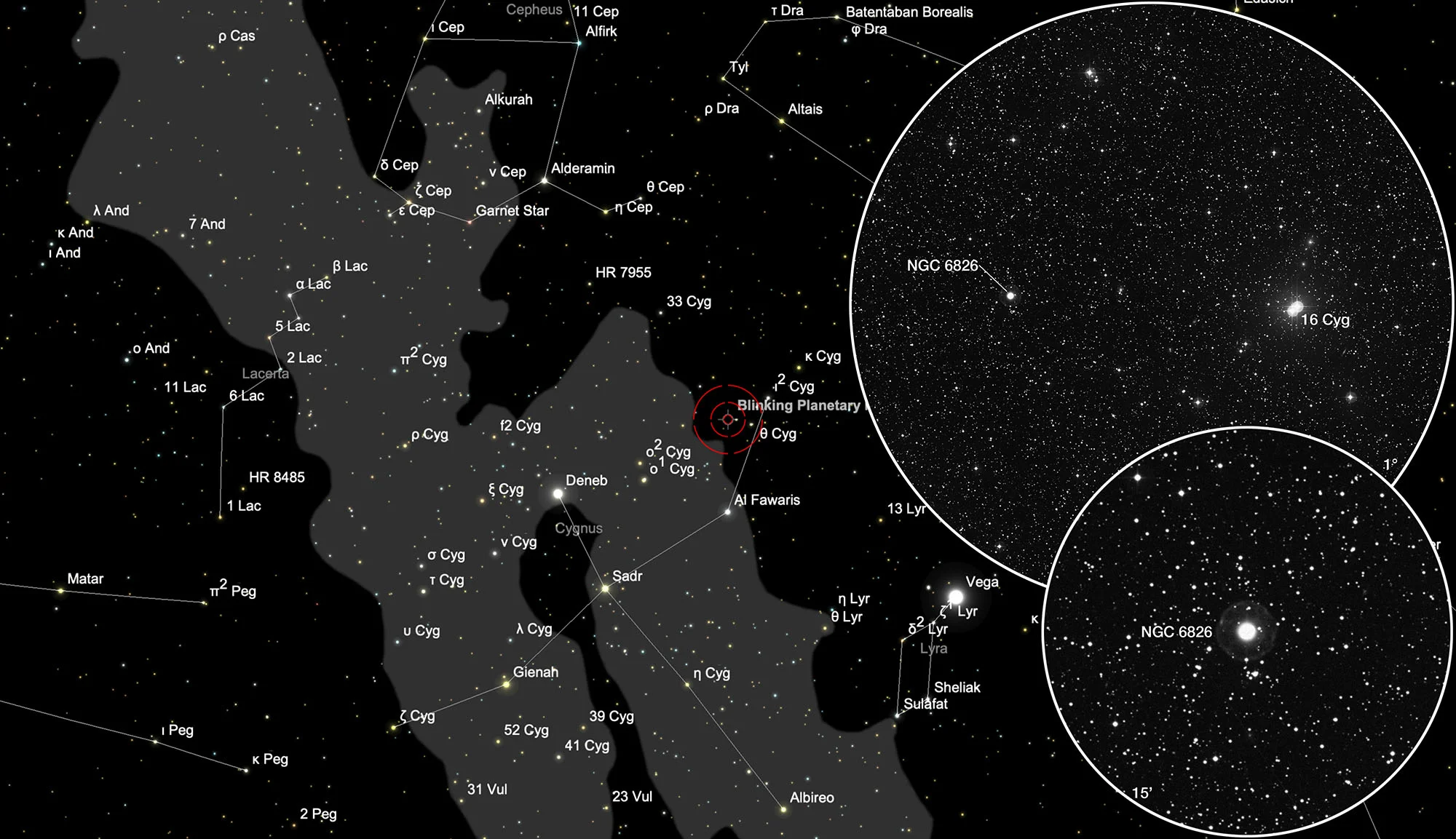Blinking Planetary (NGC 6826)

History
The planetary nebula was discovered by William Herschel on 6 September 1793 and cataloged as IV 73. He wrote about it: «A bright point, a little extended, like two points close to one another, as bright as a star of the 8.9 magnitude, surrounded by a very bright milky nebulosity suddenly terminated, having the appearance of a planetary nebula with a lucid centre; the border however is not very well defined. It is perfectly round, and I suppose about half a minute in diameter. It is of a middle species, between the planetary nebulae and nebulous stars, and is a beautiful phenomenon.» [465]
Physical Properties
The distance of NGC 6826 is about 2000 to 2200 light years. Like all planetary nebulae, this is the remains of a red giant that has shed its outer layer of gas, leaving a hot, dense white dwarf star at its centre. Our sun will meet the same fate in a few billion years. The most striking feature are two clouds of ionized gas, so-called FLIERS (Fast Low-Ionization Emission Region), which propagate along the axis of symmetry at supersonic speeds. These appear to be of recent date. [187, 196]

NGC 6826 earned its nickname «Blinking Planetary» because the nebula is blinded by the bright central star when viewed directly. The nebula only becomes visible if you look slightly past, since the retina of the eye is more sensitive to light outside the visual foveer. Other planetary nebulae show the same effect.
| Designations | PN G083.5+12.7: NGC 6826, PK 83+12.1, ARO 13, VV 242, VV' 514 |
| Right Ascension (J2000.0) | 19h 44m 48s |
| Declination (J2000.0) | +50° 31' 30" |
| Dimensions | 25." (optical) |
| Distance | 1.09 kpc |
| Radial Velocity | -6.2 ± 0.6 km/s |
| Expansion Velocity | 11. (O-III) km/s |
| C-Star Designations | AG +50 1416, AG82 383, BD +50 2869, DC 37693, EM* CDS 1096, GCRV 12124, HD 186924, PLX 4649, SAO 31951, TD1 25412 |
| C-Star Magnitude | B: 10.33, V: 10.41 |
| C-Star Spectral Type | O3f(H) |
| Discoverer | HERSCHEL 1793 |
Finder Chart
Blinking planetary nebula NGC 6826 is located at the western wingtip of the constellation Cygnus, near the winged stars Al Fawaris (δ Cygni) and ι2 Cygni. On a clear, dark night, the 6 mag faint binary star 16 Cygni should be visible to the well dark-adapted eye. This is only half a degree away from NGC 6826. The PN should be easy to find using the close-up from 16 Cygni. On 17 July the PN is in opposition to the Sun and crosses the meridian at local midnight.
Visual Observation

350 mm aperture: Blinking planetary nebula NGC 6826 lives up to its name. It often strikes you as a faint, fine, rounded little nebula. If one immediately wants to hold the nebula with direct vision, it already disappears and the 10.4 mag bright central star emerges. You can continue this game at will. You can see the nebula disc with averted vision, the central star directly. At high magnification, e.g. 400x, the nebula and the central star remain visible at the same time. The blinking effect is further lost even with a nebula filter. In this, the nebula predominates and the central star is often completely swallowed up by the filter in small telescopes. [192]
